I look through the viewfinder, and a feeling comes over me. I know the setting is right, and the image oozes with mood. There’s something about what I see that has an effect I know will be well received when others and I look at the resulting image.
This magic doesn’t happen every time I press the shutter button.
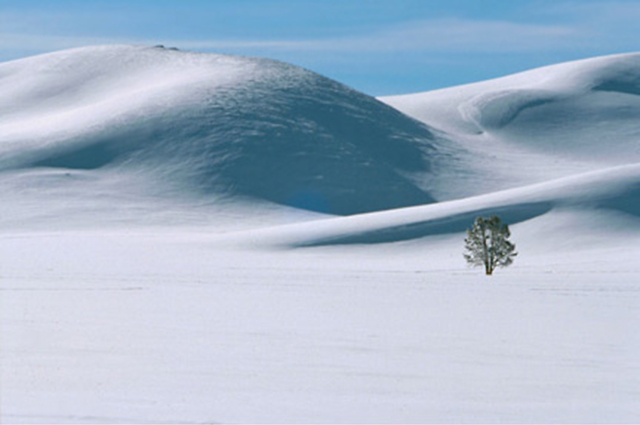
What it means to capture the mood of what’s in front of you can be subjective, changing from one photographer to the next. For me, it’s all about the feeling of being there, of taking the viewer to the location of the photo to feel like I did when the shot was taken. When you experience these sensations as you’re making the photo, you know the viewer will too, as s/he looks at the image.
Just as a person can have varying moods, so too can a photograph. Either can experience a feeling of intense action, solitude, serenity, or danger. To me, mood in a photograph tends toward relaxation and similar feelings that make the viewer want to walk right into the picture and sit there for a while.
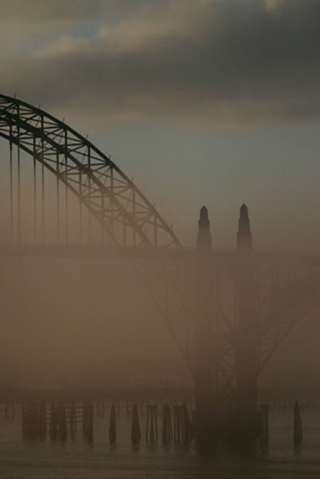
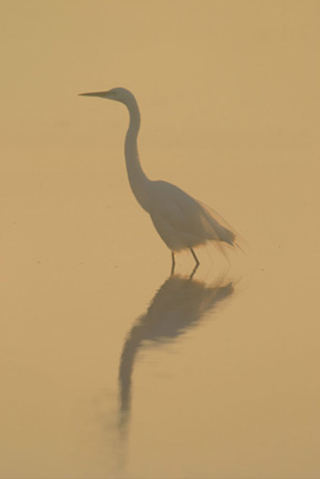
What is mood and what elements are needed to create it so that whoever looks at your photo can move into the scene and feel it? Different elements can be used to create a sense of emotion in a place. One of the most common to incorporate into a photo is fog.
A thick fog can add so much to a shot that when people look at the image, they know exactly what the experience was like when the photo was taken. The drama added by fog can be brought about in several ways:
- Getting above the fog on a ridge or mountaintop allows for a clear view of the area with the fog nestled either in a series of mountain ridges or along a river. Even if the river can’t be seen, the fog that fills the area draws the viewer’s eye–maybe even more than the river itself would.
- Wildlife in the fog can add an air of mystery to whatever the animal is doing, even if it’s just walking across a field or sitting on a nest. A single animal in the fog can make it seem lonelier than it might actually be because of the feeling of isolation.
- Other subjects that work great in fog are old bridges and trees. While fog around a group of trees is nice, finding an isolated tree set apart from others in the area creates a very strong image. One of Ansel Adams’ top prints is of an oak tree shrouded in fog with a low sun coming through in the background.
- The thicker the fog for this type of photo, the better, as it helps obscure whatever else is in the viewfinder and puts all the emphasis on the main subject.
Metering fog can either enhance or diminish the effect of the shot. If you’re above the fog and it’s bright white, treat it as snow and open up about a stop to balance the color. If you’re photographing through the fog, you can underexpose about –2/3rds of a stop to darken the overall image and bring out the fog even more, or go +1/3 to lighten it up a bit.
Make a few images at each exposure to achieve the exact feel you want. However, don’t rely on your digital LCD screen for reviewing the images, as it tends to brighten things up a bit.
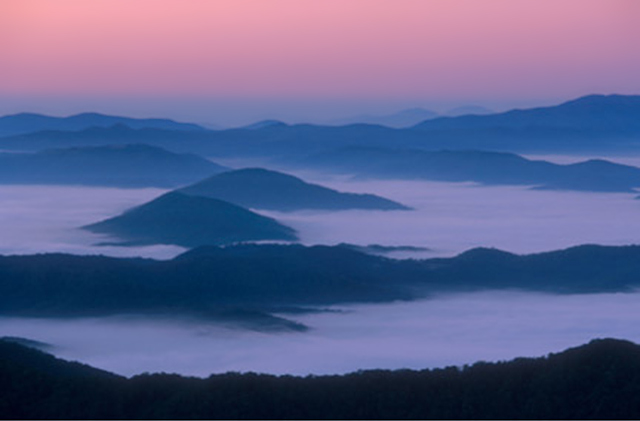
Typically, you hear advice to overexpose a fog photo, as fog tends to be lighter in color than a clear day. While this is true, sometimes you might want to portray a different effect. This is where bracketing comes in.
Do several images on the plus side, but don’t think underexposing is out of the question, because this is where it can deepen the mood a bit. While the LCD might not provide the best view of your image, the histogram can be useful in showing if your highlights are blown-out.
Fog helps isolate your subject from any distracting elements that might be in the area–such as a cluttered background. There’s really only one option when you wake up to a foggy morning, and it’s not to roll over and get a little extra sleep. Grab your gear and run out to find something to photograph before the fog burns off.
Another natural element that can be great for putting the viewer next to you is storm clouds. The darker, more ominous and threatening the sky, the more drama and mood you’ll have in the resulting images. This is where an average dreary day won’t work; it has to be on the verge of a big storm coming through.
Like fog, using exposure compensation on the minus side will make the clouds appear darker than they really were when you were there. To lessen the effect, go to the plus side, again bracketing to get the exact feel you want to bring out.
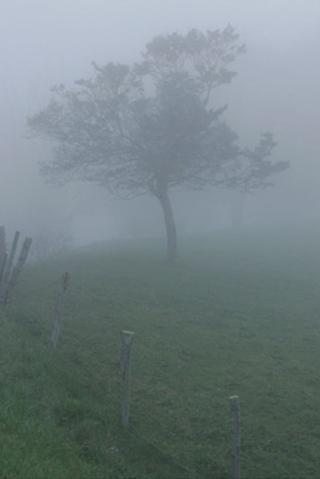
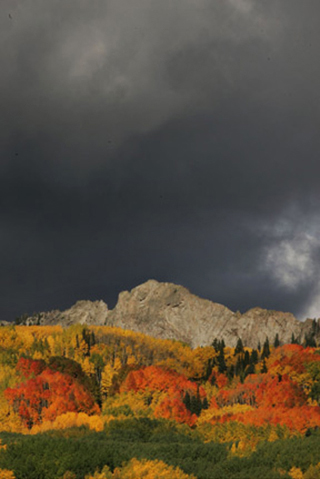
When storm clouds are brewing, the effect is enhanced if the storm is on the opposite horizon from the sun. While the sun is obscured, you might not have the greatest of photos, but if the sun breaks through and puts light on your foreground subject with storm clouds above, then a very dramatic image results.
A strong foreground subject is almost a necessity for images with storm clouds. While the clouds could be the main subject, without something else in the frame, there’s no contrasting subject.
If the sun is at the right angle, about 45 degrees above the horizon, you might even be treated to the added bonus of a rainbow. While you never want to be too far away from your vehicle when a storm is approaching–especially if it’s accompanied by lightning, taking the risk may be worthwhile once everything comes together.
While fog might create a warm and calming effect, snow can move in the opposite direction. Different snow settings can create varying moods in a photo, depending upon how the overall scene is portrayed. A snow-covered tree can place the viewer out in the cold.
A vast field of snow and frost on trees can bring out a different mood.
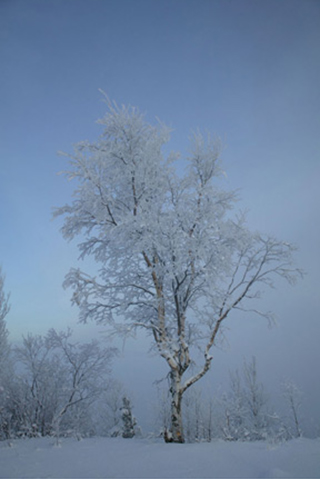
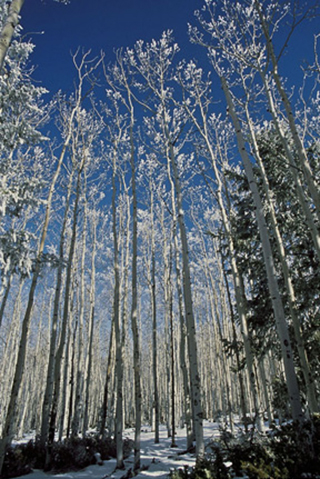
Finding the right setting for a snow scene could be difficult if you want to bring the viewer with you into the moment when you pressed the shutter release. Contrast helps. The mixture of a good blue sky and white snow can pull everything together.
Combining a snowy scene with fog or haze can also help. While fog is more prevalent in spring and fall when the ground and air temperatures are quite different, you can also come across fog during the winter. With fog and snow simultaneously, you have two elements working together to create the feeling.
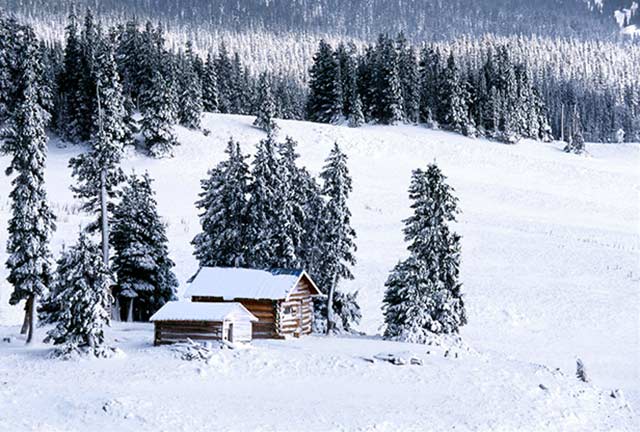
Aside from using quirks of weather, photographing any single subject standing in a large area will create an instantaneous feeling of isolation in almost everyone (refer to lead photo). It doesn’t matter what that one subject is, but the smaller it is in the scene, the greater the feeling of isolation and loneliness.
Another subject that has automatic impact is running water. Several years ago, small artificial waterfalls to set up in your home or yard were very popular, because they were supposed to have a calming effect.
The sounds of a babbling brook or a waterfall can draw people to sit and listen for long periods of time. Similarly, images of crashing waves, a peaceful stream, or a waterfall recall the peacefulness of water sounds and have similar effects.
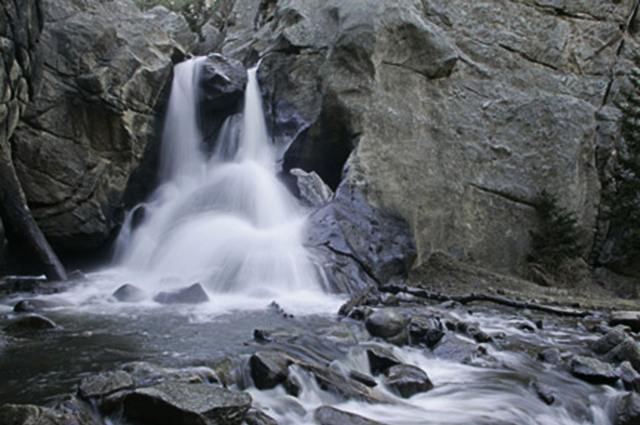
When you’re photographing running water, a long exposure is usually used in order to create the silky smooth flow of the water. While this effect is nice, a fast shutter speed can create a feeling of power as waves crash on rocks or a waterfall sends cascades of spray onto the rocks below.
Don’t feel limited because you’ve seen water shots taken mostly one way. If you try a slow shutter speed for waves crashing over rocks, your image might be more interesting than the photo capturing the impact of the waves.
What creates a feeling of mood in one person might not work that way in another. The same can be said when you ask multiple people what mood they feel when looking at a given photo. You might elicit as many different responses as the number of people you ask.
Whatever the case, do whatever you can to try to entice viewers to feel as though they were there and can feel what it was like to make that photo.
by Andy Long
First Light Photo Workshops
All text & photos: © 2006 Andy Long. All rights reserved.

Leave a Reply